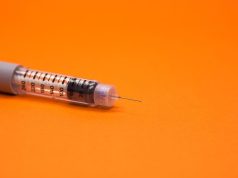However, 86.6 percent of people with opioid use disorder are not receiving medication treatment
WEDNESDAY, Aug. 10, 2022 (HealthDay News) — Despite some progress in expanding access to medications to treat opioid use disorder (MOUD), a substantial gap between OUD prevalence and treatment receipt still exists, according to a study published online Aug. 4 in the International Journal of Drug Policy.
Noa Krawczyk, Ph.D., from the NYU Grossman School of Medicine in New York City, and colleagues estimated past-year OUD prevalence rates using data from the U.S. National Survey on Drug Use and Health (2010 to 2019).
The researchers found that adjusted estimates suggested past-year OUD affected about 7.6 million individuals in the United States (2,773 per 100,000 individuals aged at least 12 years). However, only roughly 1.0 million individuals received MOUD (365 per 100,000 individuals aged at least 12 years). Approximately 86.6 percent of individuals with OUD nationwide may benefit from MOUD treatment but do not receive it. In the past decade, MOUD receipt increased across states. There was a 105.6 percent increase in the rate of MOUD receipt from 2010 to 2019. However, most regions still experienced wide gaps between OUD prevalence and MOUD receipt, with the largest treatment gaps in Iowa (97.3 percent), North Dakota (96.1 percent), and Washington, D.C. (95.1 percent).
“Even in states with the smallest treatment gaps, at least 50 percent of people who could benefit from medications for OUD are still not receiving them,” a coauthor said in a statement. “We have a long way to go in reducing stigma surrounding treatment and in devising the types of policies and programs we need to ensure these medications reach the people who need them the most.”
One author disclosed receiving personal fees for consultation and testimony in litigation.
Copyright © 2022 HealthDay. All rights reserved.








